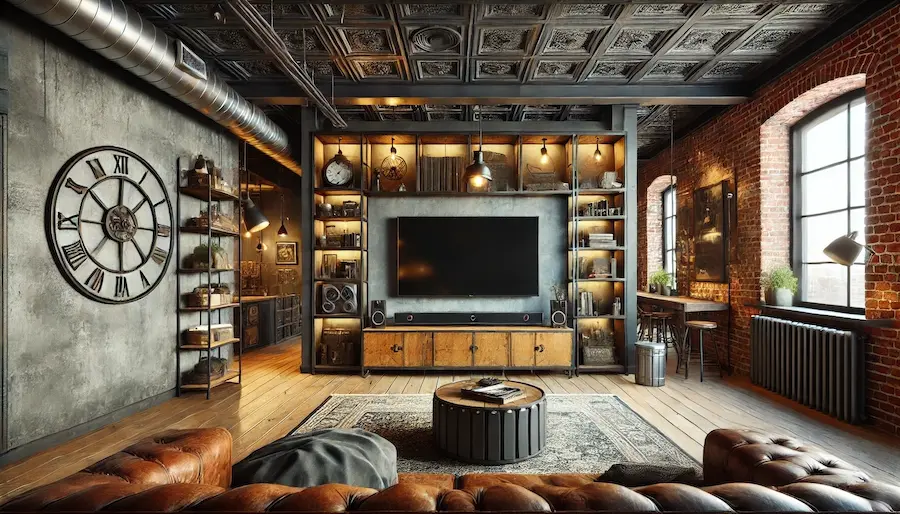An industrial entertainment room combines the raw, unfinished aesthetics of industrial design with modern entertainment amenities, creating a unique and functional space for leisure and socialization. This article explores the history, key features, applications, and considerations for designing such a space.
History and Origins of Industrial Entertainment Rooms
Industrial design emerged in the early 20th century, drawing inspiration from factories and industrial spaces. Characterized by exposed structural elements, raw materials, and utilitarian objects, this style gained popularity in urban areas where old warehouses and factories were converted into living spaces. The integration of industrial design into entertainment rooms reflects a desire to create spaces that are both functional and aesthetically intriguing, blending the ruggedness of industrial elements with the comfort of modern amenities.
Key Features of Industrial Entertainment Rooms
Industrial entertainment rooms are distinguished by several hallmark elements:
- Exposed Structural Elements: Visible beams, ductwork, and brick walls contribute to the industrial aesthetic, adding character and a sense of history to the space.
- Use of Raw Materials: Incorporating materials such as metal, wood, and concrete enhances the industrial feel. For example, metal-framed furniture and reclaimed wood tables are common choices.
- Neutral Color Palette: Shades of gray, black, and white dominate, often complemented by earthy tones, creating a cohesive and understated backdrop that allows industrial features to stand out.
- Functional Lighting: Industrial-style lighting fixtures, such as metal pendant lights or vintage-inspired sconces, provide both illumination and contribute to the overall design theme.
- Open Space Layout: An open floor plan with minimal partitions reflects the spaciousness of industrial environments, allowing for flexible arrangement of entertainment components.
Applications of Industrial Entertainment Rooms
These spaces serve various functions within a home:
- Home Theaters: An industrial-style home theater combines the rugged charm of industrial design with modern technology, creating a unique viewing experience.
- Game Rooms: Industrial design elements can be incorporated into game rooms, providing a stylish and edgy environment for recreational activities.
- Living Rooms: An industrial living room offers an urban chic space, blending raw materials with modern design elements for a stylish and comfortable environment.
Considerations When Designing an Industrial Entertainment Room
When planning an industrial entertainment room, consider the following:
- Balancing Comfort and Aesthetics: While industrial design emphasizes raw materials and open spaces, it’s important to incorporate comfortable seating and personal touches to create an inviting atmosphere.
- Acoustic Treatment: Industrial spaces can be prone to echo due to hard surfaces; consider adding rugs, curtains, or acoustic panels to improve sound quality.
- Lighting: Ensure adequate lighting for various activities, using a combination of ambient, task, and accent lighting to enhance both functionality and ambiance.
- Integration of Technology: Plan for the seamless incorporation of entertainment systems, ensuring that cables and devices do not detract from the industrial aesthetic.
Conclusion
An industrial entertainment room offers a distinctive blend of rugged industrial elements and modern comforts, creating a versatile space for entertainment and relaxation. By thoughtfully combining materials, design elements, and technology, one can craft an environment that is both functional and visually engaging.
